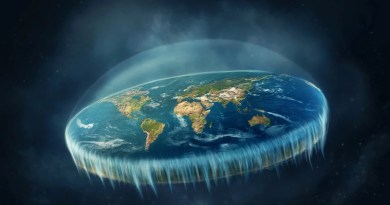Curvature Or Dip?
In calculating the amount of curvature, or dip below the
eye-line of the observer, we have a simple rule, ignoring some
small decimal points, namely:— Square the number of miles
given as the distance, and multiply the product by eight
inches, and divide by twelve, which will give in feet the depth
of the dip from the observer’s line of sight. This is true
for a globe of 25,000 miles circumference ; thus in six miles
there would be a dip of 24 feet, and in twelve miles a dip of
96 feet.

But in calculating the depth of the dip, zetetics often have
made an unnecessary concession to the globularist, by
deducting from the distance of the object the place of the
, point where the eye-line is supposed to move downwards to
touch the earth, or the level of the water. This is a concession
to the false views of perspective given in school books, such
as we have illustrated in our Fig. 11, and to which the student
can turn. Y e t in spite of this unnecessary concession,
zetetics have shown that distant objects are often visible
when they ought to be out of sight, and a long way below
the horizon, if the sea be globular!
If we turn to the laws of true perspective, as already given,
we shall see that this deduction is not only unnecessary, but
that, moreover, the height of the observer should in strictness
be added to the amount of dip.
Let us turn to Fig. 14 to illustrate this fact. Let the
point E represent the position of the observer on the sea-level;
his line of sight would be a tangent to the sphere at
the place of observation, as shewn by the line E H, and the
dip of an object at J would be represented by the line H J.
Now raise the observer to the height of the telescope at F;
his line of sight is still a horizontal line in the direction of G,
and parallel to E H, therefore the dip from G to J is mani
festly greater than that from H to J. And this is true
whether we reckon the dip towards the centre of the globe
in the direction of G L, or at right-angles from the line of
sight G M.


